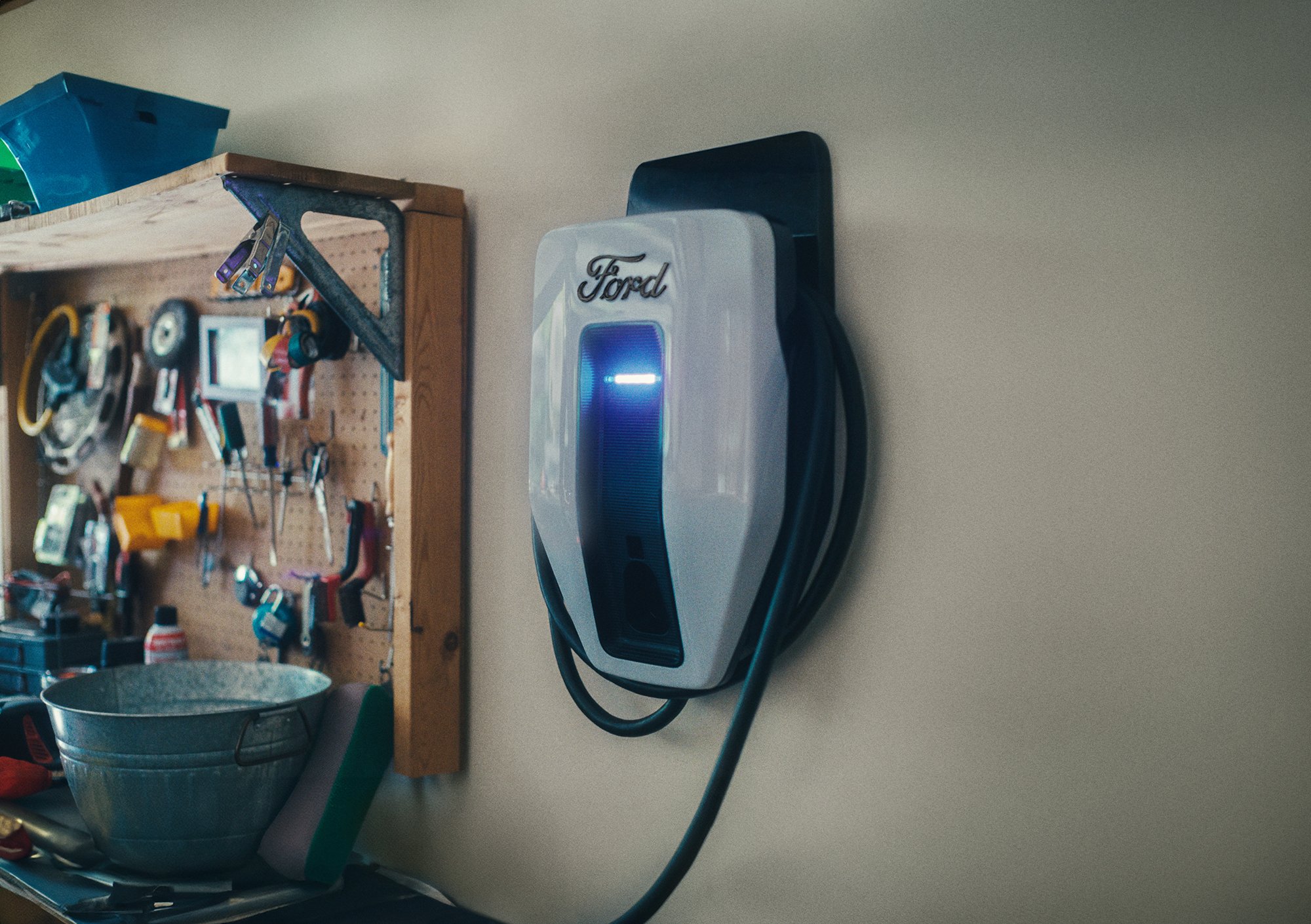Ford is fully aware that it faces a significant challenge in convincing more customers to embrace electric vehicles (EVs).
Although Ford holds the position of the second best-selling electric vehicle brand, trailing only Tesla, a recent survey of over 2,000 potential buyers revealed the automaker still faces several obstacles.
Many misconceptions, myths, and barriers persist, deterring people from making the switch from gasoline-powered cars.
According to Ford officials, these include a lack of understanding of the benefits of home charging, an overestimation of the range needed for most daily driving, and concerns over the cost and frequency of battery replacements.
In response, Ford is introducing a new initiative called the Ford Power Promise, aimed at addressing these misconceptions.
The most notable part of this program is that Ford will now include a free home charger with the purchase or lease of any new EV, along with covering the cost of installation.
Given that Level 2 home chargers can cost several hundred dollars, and installation fees can range from $2,000 to $10,000 depending on specific conditions, this offer is quite substantial.
Ford hopes this will not only motivate potential EV buyers to go electric but also reassure them that they won’t need to rely on public DC fast chargers as frequently as they might have thought.
“We’ve found that it’s not range anxiety we’re facing—it’s change anxiety,” explained Martin Delonis, a senior manager with Ford’s electric Model E division, in a recent call with reporters.
“Consumers are worried about range, charging, and battery health. These concerns aren’t shared by existing EV owners, which shows us there’s a major perception gap, and prospective buyers need help bridging it.”
The Ford Power Promise, which kicks off on October 1, offers additional benefits for anyone considering the Mustang Mach-E, F-150 Lightning, or E-Transit cargo van.
These perks include 24/7 technical support for any EV-related issues, complimentary roadside assistance should drivers run out of battery, and a reminder that Ford’s battery warranty covers eight years or 100,000 miles, whichever comes first.
“Most of our growth in electric truck and SUV sales has come from early adopters—those truly passionate about electric vehicles and new technologies,” Delonis continued. “This initiative is focused on reaching everyone else.”
Most current EV owners already charge their vehicles at home, particularly those early adopters Delonis referenced. However, convincing the broader public to break free from the gas station mindset—the belief that one must leave home to “fuel up”—has proven more difficult.
Many potential EV buyers are reluctant to invest in home chargers, thinking they can rely on public DC fast chargers instead.
While fast chargers are an option, they come with their own set of challenges, including longer wait times, reliability issues, and the inconvenience of queues.
According to Ford’s research, 89% of potential EV buyers would be more inclined to purchase if they had access to home charging, yet 46% don’t understand how home charging works.
In contrast, 92% of current EV owners find charging at home as easy as plugging in their phones, and 79% rarely use public chargers.
“Shoppers believe they need a minimum range of 350 miles,” Delonis noted. “However, most drivers rarely cover more than 150 miles in a single day, and almost none go over 290 miles.”

Additionally, many survey respondents estimated that the nearest high-speed DC charger was 44 miles away, when in reality, it’s typically about half that distance for most people.
As a result, Ford’s efforts are now focused on promoting the benefits of EV ownership—benefits that long-time EV drivers already understand, but that new customers might not yet grasp.
“Refueling an EV requires a shift in mindset and behavior,” Delonis explained. “Instead of making a stop at the gas station, your vehicle charges overnight, just like your smartphone. It’s a convenience people don’t fully realize until they experience it.”
This is where Ford’s plan to offer free home chargers comes into play. “We’re the only ones doing this,” said Becca Anderson, a senior director at Ford Model E.
“This means less stress and more convenience for our customers.” While other automakers, like Honda and Acura, offer home chargers and installation credits, Ford’s program is among the most comprehensive available.
Ford officials detailed that the standard installation would cover up to 60-amp circuits, 80 feet of wiring, and connections to the electrical meter.
Additional costs, such as digging underground lines or upgrading electrical panels, would be the buyer’s responsibility. The included charger, the Ford Charge Station Pro, will be installed by an external provider, Qmerit.
Traditionally, automakers have focused on building cars, leaving other aspects—such as fueling—to third parties.
However, as more companies seek to boost EV adoption, Ford has taken proactive steps. It was the first automaker to open up Tesla’s Supercharger network to its vehicles, and it continues to expand its BlueOval charging network.
Despite these efforts, Ford has faced its own challenges, including lower-than-expected EV sales and financial losses, leading the company to scale back on certain EV plans.
Whether the free home charger, installation offer, and other perks will effectively ease consumer concerns remains to be seen.
There’s also the question of whether Ford’s dealers will actively promote these benefits and educate customers about them.
Earlier this year, Ford faced backlash over an aggressive dealer certification program focused on EVs, which led to legal disputes.
Nonetheless, Ford has made strides in this area. According to InsideEVs, the company’s Ford University program is helping to train salespeople to better inform customers.
“Our dealers are our committed partners, offering the largest service network and supporting the Ford Power Promise,” Anderson said.
One thing is certain: owning a Ford EV has never been a better deal.

